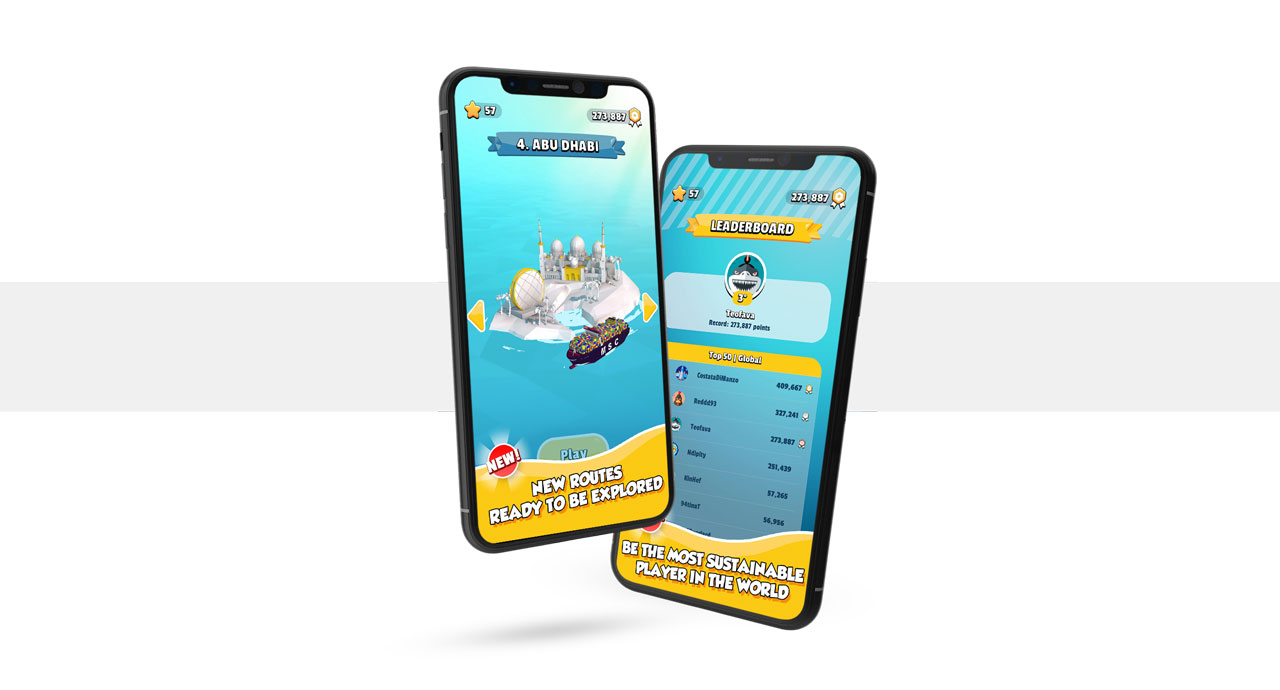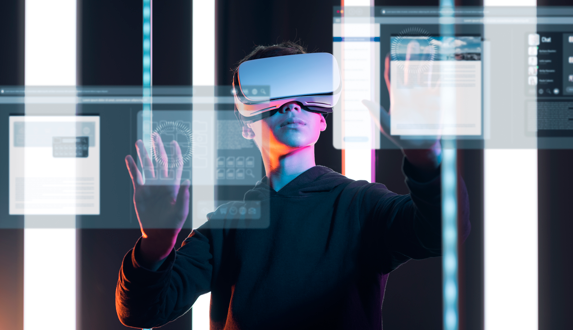Already downloaded by over 40,000 users, “The Sea Rider,” the mobile game developed for MSC Mediterranean Shipping Company (MSC), is now available for download in a new version on app stores. Here are the game’s new features: additional destinations, increasingly engaging challenges, a more modern user experience (UX), and a stronger focus on environmental issues, particularly the concept of biofuel.
The use of interactive technologies and gamification mechanics reaffirms itself as a strategic tool to convey brand values, create and consolidate a brand community, and engage with the audience.
How does the game work? The most eco-friendly captain wins!
Ready to set sail? With The Sea Rider, starting today, you can become the captain of a cargo ship. Your mission is to navigate the sea and ferry the ship to one of the possible destinations. The faster you are and the more fuel you save, the more points you earn, and the closer you get to becoming the king of the seas and sustainability! However, to reach port, you’ll have to face many challenges: avoiding whales, not damaging coastlines, not endangering wildlife, harnessing currents, using straits as shortcuts, and optimizing your journey using a limited number of moves with biofuel. It’s a metaphorical journey through the theme of environmental sustainability, one of MSC’s brand assets.

The Sea Rider app’s new features: content, UX, gamification
The app has been revamped in various aspects: content, user experience (UX), and gamification mechanics.
In terms of content, in addition to the four new ports – Abu Dhabi, Antwerp, King Abdullah, and Valencia – and the main themes from the 2020 version of the game, the concept of “biofuel” has been added. Biofuel is an alternative fuel with reduced emissions, obtained from actual fuel and used cooking oil, and it is effectively used by MSC in the percentages of 70% – 30%, the highest among cargo companies. This innovation further reinforces the focus on eco-sustainability, a fundamental brand value for our client.
From the UX perspective, we have updated certain aspects of the user interface, including a new tab menu enriched with a new leaderboard section. Skillful players can now admire their performances in a global ranking that displays the Top 50 worldwide best scores achieved in the game.
Regarding the gamification mechanics, each journey has been enriched with game mechanics and new challenges that test the user’s skill and challenge them to minimize environmental impact. For example, utilizing currents and using secondary passages and caves to “teleport” the ship faster towards the destination port.
The marketing benefits of the application
From a marketing standpoint, the navigation game – the world’s first developed in the logistics and transportation sector – pursues two different objectives.
BRAND POSITIONING
The game is a modern, fun, cross-generational tool to raise awareness among MSC’s audience about a value dear to the brand: environmental sustainability. It should be emphasized that in this historical moment, storytelling loses its power unless it becomes storymaking, meaning that brands must practice the values they preach. MSC’s mobile game is, therefore, even more effective because the company takes concrete actions and strategies to minimize environmental impact, demonstrating consistency with its own brand.
USER ENGAGEMENT
Now more than ever, people demand the presence of brands in terms of closeness, transmission of useful and valuable information, and proactivity. According to a recent Salesforce survey, the majority of customers (54%) believe that brands should evolve the way they engage with their communities. Nothing engages people better than a game, regardless of whether they are children or adults. It is evident, therefore, that The Sea Rider is moving towards innovating the way customers (and prospects) are involved around the MSC brand.
Marketing, gamification, and advergames: opportunities
We are bombarded with avalanches of messages and information every day. Microsoft claims that the average human attention span at this historical moment is 8 seconds. Attention and interactions are even shorter, especially among the younger audience; Millennials and Gen Z represent 64% of the world’s population. The “attention economy” forces every marketing manager to ask themselves at least one of these three questions daily:
#1 – How to capture the attention of their audience?
#2 – How to do it effectively at a time when marketing budgets are decreasing?
#3 – How to cultivate brand awareness and values in the minds of the audience?
Gamification and immersive technologies, especially when combined, represent a powerful answer. There must be a reason why over 70% of a panel of companies surveyed by Forbes stated that they intend to use games in their marketing and customer retention activities. And why 7 out of 10 media planners are considering integrating augmented reality into their proposals. Additionally, according to a survey by Sellmasters, 70% of the sample expressed their willingness to experiment with immersive technologies to enhance the user experience and engagement of their users and customers.
We have extensive experience in these areas: advergames and the use of immersive technologies for marketing and customer experience.
Contact us to learn more.
In the meantime, start playing!
The new application is available for mobile devices on iOS HERE and Android HERE.


